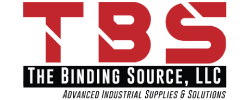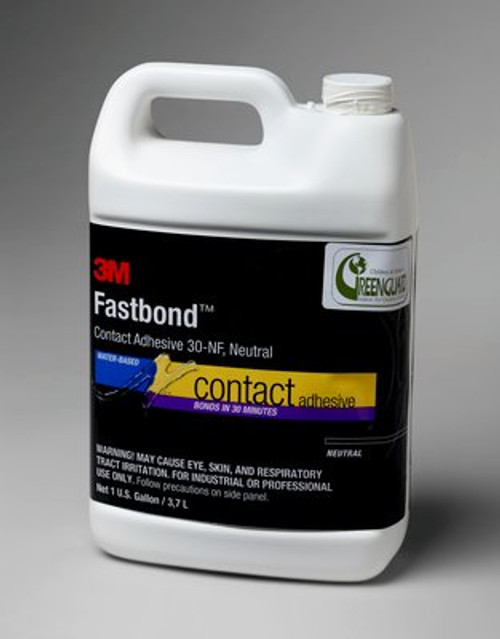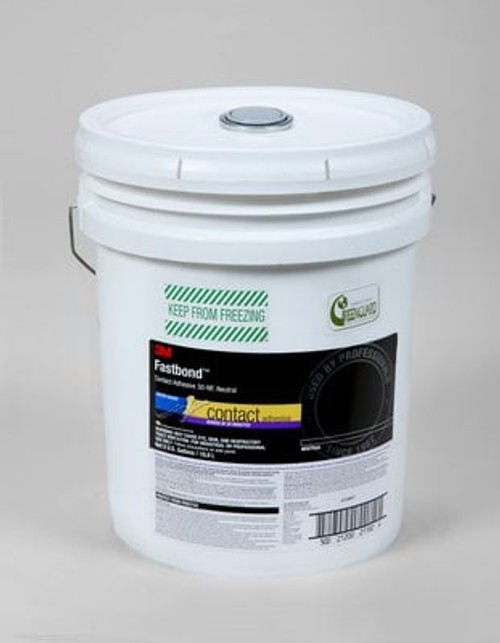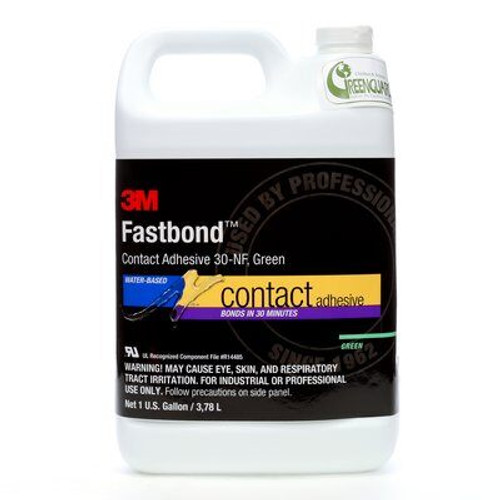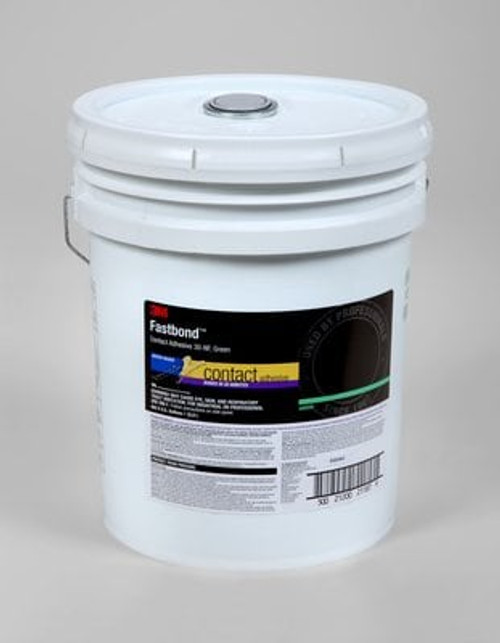Product Description
- FOR INDUSTRIAL USE ONLY: This product is designed exclusively for industrial applications
- ADHERES A VARIETY OF SUBSTRATES: Bonds most foamed plastics, plastic laminate, wood, plywood, and canvas
- TOUGH, RESILIENT BONDS: Creates a high-strength, high-temperature-resistant bond
- LONG BONDING RANGE: Delivers up to a four-hour bonding range
- A VARIETY OF APPLICATION METHODS: Can be applied by either spray, brush, or roller
- NON-FLAMMABLE: Non-flammable in its wet state
3M™ Fastbond™ Contact Adhesive 30NF is a low-odor, water-based, adhesive designed to have high strength, high coverage, long bonding range and good heat resistance. This classic adhesive has proven to bond combinations of most foamed plastics, plastic laminate, wood, plywood, wood veneer and canvas.
We designed 3M™ Fastbond™ Contact Adhesive 30NF to create a very strong bond resistant to high heat with a bonding range of up to four hours. It is deal for decorative laminate applications where non-flammability and low VOCs are critical. Post-formable and heat resistant, it is non-flammable in the wet state, which makes in an optimal solution in settings where fire protection is of utmost concern.
Recommended Applications
- Most formed plastics
- Plastic laminate
- Wood
- Plywood
- Wood veneer
- Canvas
High Immediate Strength, Long Bonding Range
Formulated to be a fast-acting solution, 3M™ Low Mist Contact Adhesive 30NF delivers high immediate bonding strength with a long bonding range. Our design offers a great solution for bonding porous substrates to porous or non-porous substrates with time for positioning and adjustments. With 3M™ Low Mist Contact Adhesive 30NF, you can leverage the advantages that come from an adhesive that is ready to meet the demands of many tough applications.
Applying Your Adhesive
Whether it is being sprayed, brushed or rolled on, the application of your 3M™ adhesive is a straightforward process. Start by carefully applying your adhesive to your surface until you’ve formed a uniform coat. Using an overlapping pattern, the application of one coat should prove sufficient for most surfaces. Effective adhesive coverage is accomplished when 80% or more of the surface is covered. Some substrates, including porous materials, may require an additional coat. In order to apply additional adhesive, simply wait until the existing adhesive becomes dry to the touch, and then proceed with the application of the additional coat.
